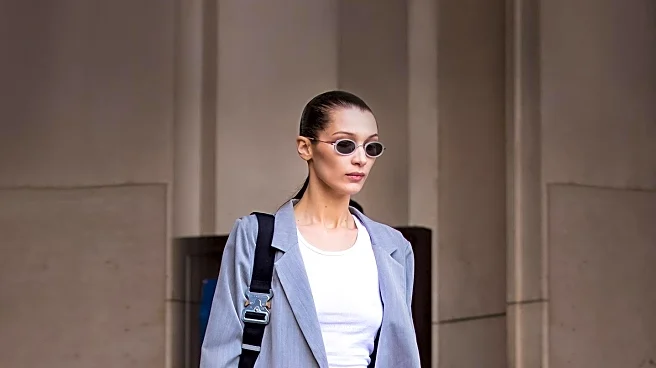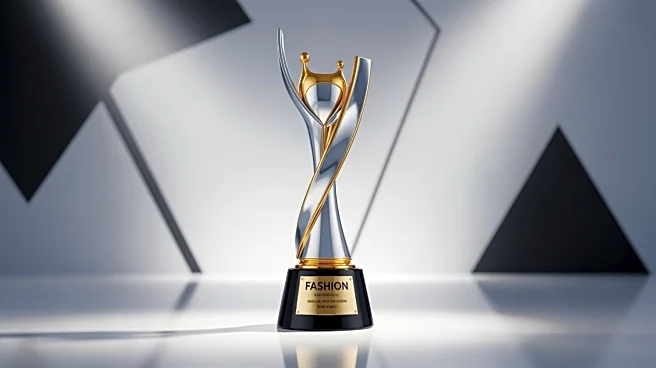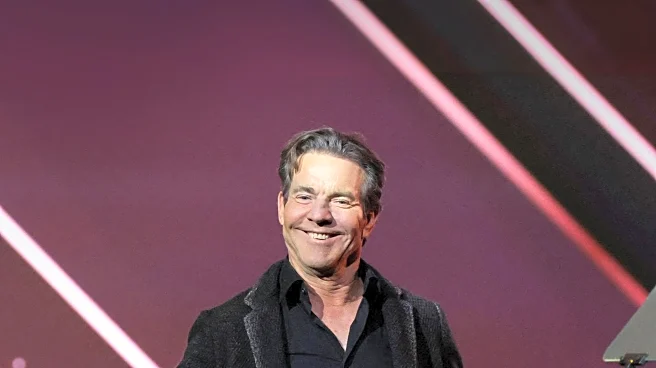What's Happening?
Bella Hadid was recently photographed in Los Angeles, showcasing a distinctive fashion ensemble while heading to a meeting with her agents at the San Vicente Bungalows. The model opted for a distressed,
cropped leather Chloé jacket paired with an embroidered butter yellow skirt, complemented by two-tone Chanel pumps. Her accessories included a deep red leather handbag and bug-eyed sunglasses, with her hair styled in a loose chignon. This appearance follows her recent activities, including celebrating her 29th birthday and attending her sister Alana Hadid's wedding. Hadid's choice of attire reflects her personal style, blending sharp sophistication with contemporary trends.
Why It's Important?
Bella Hadid's fashion choices often influence trends within the industry, given her status as a prominent model and fashion icon. Her unique style, which combines elements of sophistication and modernity, sets a precedent for contemporary dressing. This particular outfit highlights her ability to merge high fashion with personal flair, potentially inspiring designers and fashion enthusiasts alike. Hadid's influence extends beyond her modeling career, impacting fashion marketing and consumer preferences, especially among younger demographics who look to her for style inspiration.
What's Next?
As Bella Hadid continues to make public appearances, her fashion choices will likely remain a focal point for media and fashion analysts. Her influence may lead to increased interest in the brands she wears, such as Chloé and Chanel, potentially affecting their market performance. Additionally, Hadid's ongoing engagements, including potential collaborations or campaigns, could further solidify her role as a trendsetter in the fashion industry.
Beyond the Headlines
Bella Hadid's fashion statements often reflect broader cultural trends, such as the blending of traditional and modern styles. Her ability to seamlessly integrate various fashion elements may encourage a shift towards more personalized and eclectic dressing among consumers. This could lead to a broader acceptance of diverse fashion expressions, challenging conventional norms within the industry.











